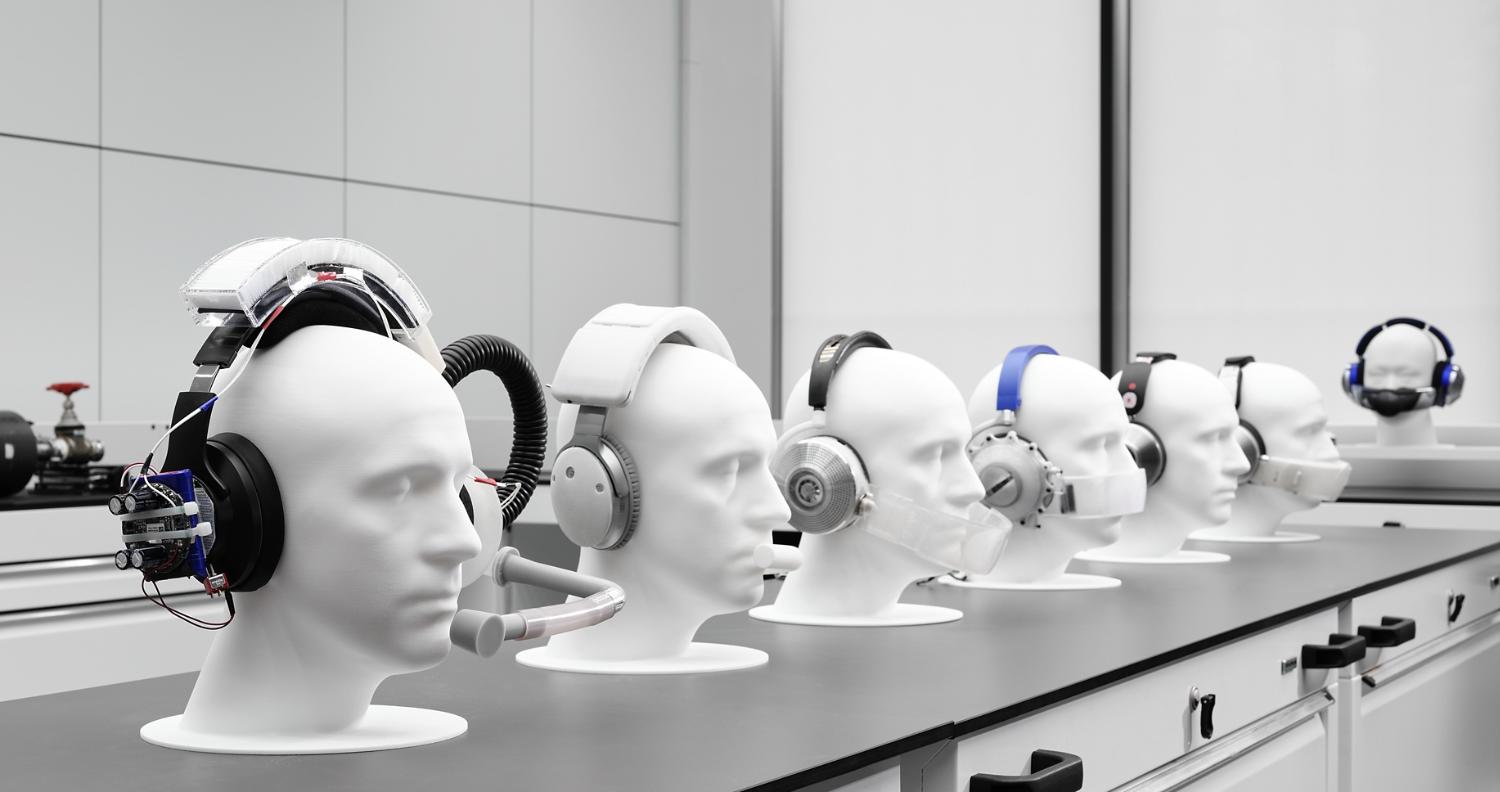Dyson Zone: Moving Air Intelligently
In the home, airflow projection from Dyson purifiers rarely conflicts with other airflow sources. Outdoors, however, natural air movements – whether a light breeze or strong winds – are uncontrollable and unavoidable. So, Dyson engineers had to find a way to maintain excellent performance despite these challenges.
Filtration isn’t just about having a good filter; filter design, airflow pathways and machine sealing must work hand in hand. Frustrated by his Hoover Junior clogging on the first pass, James Dyson engineered the first cyclonic bagless vacuum cleaner that never lost suction, developing 5,127 prototypes in the process. Cyclones spin air to separate particles from airflow. Over time, by developing a multi-stage filtration process with a larger cone – the bin – plus multiple smaller cones, Dyson engineers created a system that is even more efficient. Over 30 years, this principle has developed into Dyson’s 6-stages of vacuum filtration, expelling only clean air.
30 years of air
Airflow is an incredibly powerful phenomenon, capable of extraordinary things. Removing particles from airflow in our vacuum cleaners, purifiers and hand dryers depends on controlled airflow through cyclones, meshes and advanced filter media. Manipulating airflow is central to achieving results typically achieved with high heat, like drying hands and styling hair. Only through moving air in the right way, at the right speed and in the right volume can Dyson engineers achieve the most effective performance.
-

-
500 prototypes
The Dyson Zone™ noise-cancelling headphones rely on an effective and efficient clean air delivery mechanism to channel purified air to the wearer. Originally a snorkel-like clean air mouthpiece paired with a backpack to hold the motor and inner workings, it evolved dramatically over its six years in development. More than 500 prototypes saw one motor initially placed at the nape become two compressors, one in each ear-cup and the evolution of the snorkel mouthpiece into an effective, contact-free visor that delivers clean air without full-face contact.
Developing a non-contact solution was a must for Dyson engineers, to avoid the discomfort and irritation often associated with full-contact alternatives. The visor, therefore, was a critical element. The compressors in each earcup draw air through the dual-layer filters and project two streams of purified air to the wearer’s nose and mouth, channelled through the non-contact visor. Sculpted returns on the visor ensure purified airflow is kept near to the nose and mouth, and the central mesh diffuses the two jets of airflow, to ensure that the purified air exiting the filters is effectively delivered to the nose and mouth in crosswinds, and for the wearer’s specific facial shape.

Going beyond existing testing methods, Dyson engineers use a breathing manikin fitted with medical-grade mechanical lungs and sensing equipment, which ‘inhales’ pollution replicating human breathing patterns in a controlled chamber. They then measure the pollution level within the nose and throat to determine the filtration efficacy of those particles which would otherwise end up in Frank’s artificial lung.
Press Contacts
-
Press Office
Email: press.office@dyson.com
-


